

Biodiversity
Action
Plan
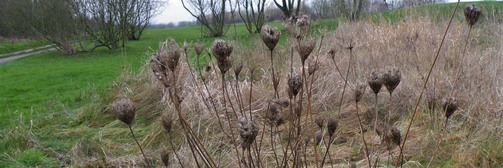
Frequent mowing to keep grass short does not necessarily banish wildlife and flowering plants, but the use of fertilisers, pesticides and herbicides should be reduced to a minimum or stopped. Mowing once every four weeks to ~3 to 5cm will allow some flowering plants to grow in short grass and flower between cuts.
A range of short and longer grass is however better for wildlife, and wildflowers can be encouraged to grow and seed in the grass by mowing later in the year.
Removing longer grass cuttings stops plants being smothered and soils becoming too nutrient-rich. It removes nutrients, lowers soil fertility, and prevents a ‘thatch’ of dead grass developing.
Finer grasses and wildflowers need low soil fertility. Nutrient-rich grass becomes overgrown with thistles docks etc, which need to be controlled.
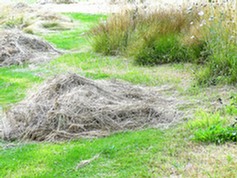
When cutting, it is important to allow wildlife to escape and to keep some cover nearby to provide protection from predators. Grass cuttings can be heaped to give invertebrates and other wildlife a refuge.
Some areas of undisturbed grassland with long grass maintained over winter, are really beneficial for wildlife. These are mown in rotation only every two to three years. Areas where this can be done are more likely to be on the edges of sites or in places where people do not normally go.
It’s best to maintain a ‘managed’ look by mowing a 1-2 metre strip of short grass between any paths and longer grass. People can be kept ‘on-side’ by telling them of the benefits of longer grass for wildlife in informative signs.
Attempts should be made to consult local people and community groups to ensure that appropriate adjustments are made to proposals and to increase the chances of their involvement as volunteers.
Management of amenity grassland to support wildlife
There are opportunities in parks, grounds and green spaces to create more varied grassland with a range of shorter and longer grass across a site, reducing the total area of closely mown grass, and, for in some areas not required for sports and recreation, making some more meadow-like areas with longer grass. And in the process save some money.
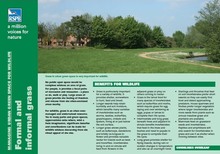
Amenity Grassland Management
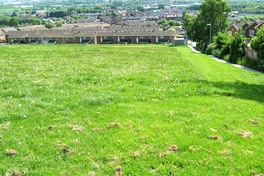
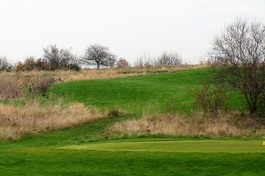
Grassland management
in summary:
- Identify the areas of the site which give opportunities for different mowing approaches.
- Where possible,aim to create a range of shorter and longer grass across a site.
- Avoid the use of fertilisers, pesticides and herbicides.
- Apart from specific sports areas that require very short grass, cut less frequently:
- allowing slightly longer grass (3 to 5 cm) to develop and
- in less intensively used areas, grass of 5-15 cm.
- Areas of longer grass (15-45 cm) can be created in areas not usually accessed.
- Where possible, create some undisturbed areas with long grass maintained over winter, cut in a 2-3 year rotation.
- Control encroaching tall docks, thistles, nettles, etc.
- Maintain a managed look by mowing strips by paths or as paths through the grassland.
- Consult local communities and make appropriate adjustments to proposals.
- Involve local people as volunteers.
RSPB’s ‘Ark in the Park’ research found that long grass had a lot more seeds and invertebrates than short grass, benefiting birds and small mammals. When wild flower-rich it had even more.